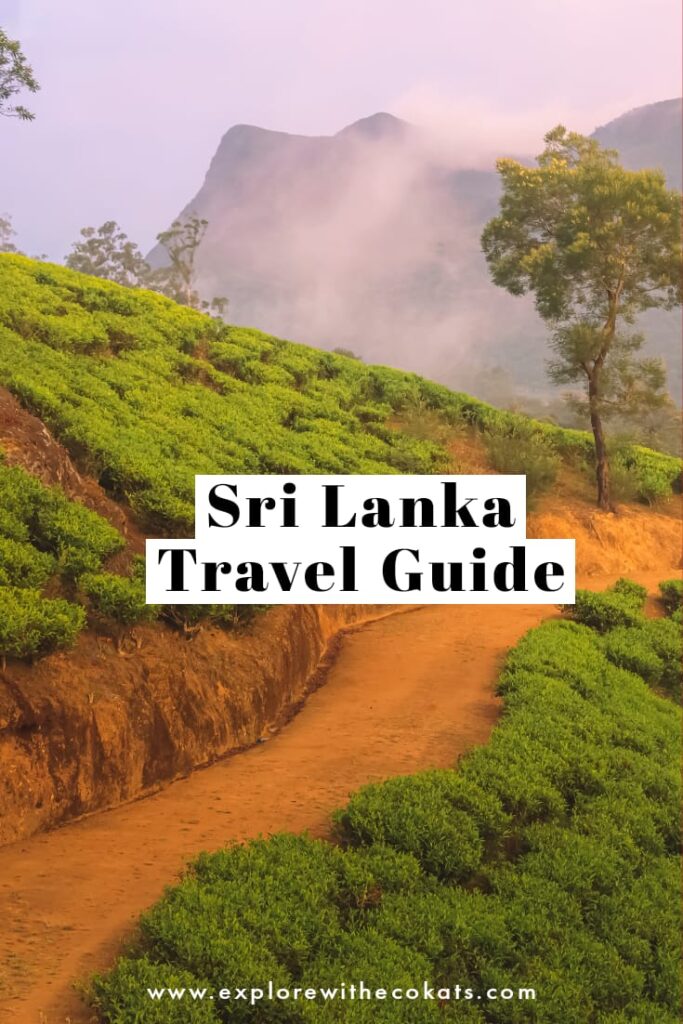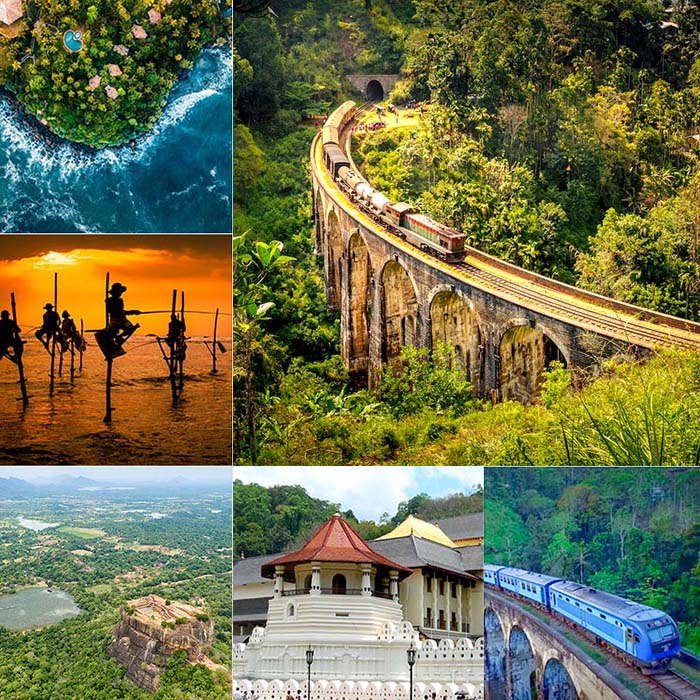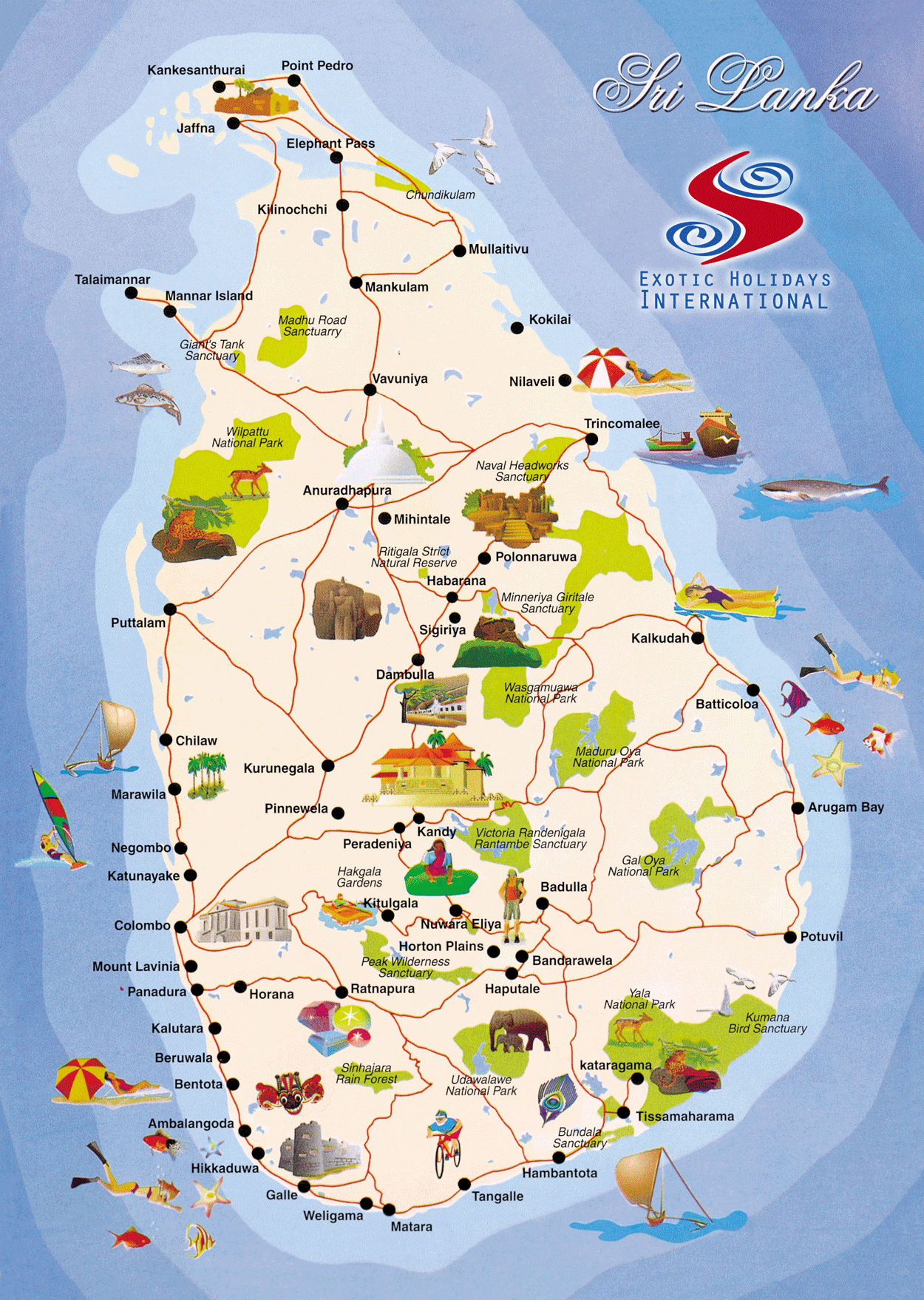
Sri Lanka, a teardrop-shaped island nation shimmering in the Indian Ocean, beckons with its intoxicating blend of ancient history, vibrant culture, breathtaking landscapes, and warm hospitality. From the mist-shrouded tea plantations of the hill country to the golden beaches lapped by turquoise waters, and from the colossal ancient ruins to the teeming wildlife reserves, Sri Lanka offers an unforgettable odyssey for every traveler. Embarking on a journey to this "Pearl of the Indian Ocean" is an experience that will ignite your senses and linger in your memory long after you depart.
A Glimpse into Sri Lanka’s Rich Tapestry: History and Culture
Sri Lanka’s history is as ancient and layered as its verdant landscapes. For over 2,500 years, it has been a cradle of Buddhist civilization, evident in the magnificent stupas, ancient cities, and sacred relics that dot the island. Legend has it that Prince Vijaya, an exiled Indian prince, arrived in the 6th century BCE, laying the foundation for the Sinhalese civilization. The island was a vital hub on ancient maritime trade routes, attracting traders and invaders alike, leading to a fascinating confluence of cultures.

Related Articles about Sri Lanka: A Journey Through the Pearl of the Indian Ocean:
- Hong Kong: A Symphony of Skyscrapers, Serenity, and Sights
- Hawaii: A Paradise Unveiled – Exploring the Top Attractions and Essential Travel Tips
- España’s Crown Jewels: A Journey Through Spain’s Best Hotels and Unforgettable Experiences
- Milan: A Renaissance of Style, Culture, and Culinary Delights
- La Dolce Vita: A Connoisseur’s Guide to Italy’s Best Hotels and Unforgettable Experiences
The Anuradhapura and Polonnaruwa kingdoms, flourishing for over a millennium, left behind monumental ruins, sophisticated irrigation systems, and intricate sculptures that stand as testaments to their ingenuity. Later, the arrival of the Portuguese, Dutch, and British colonial powers left an indelible mark on the island’s architecture, legal systems, and cuisine. This colonial past, coupled with the island’s indigenous traditions, has woven a rich and complex cultural fabric that is beautifully expressed in its festivals, art, and daily life. The dominant religion is Buddhism, with Hinduism, Islam, and Christianity also playing significant roles, fostering a spirit of religious tolerance and harmony.
Unveiling Sri Lanka’s Treasures: Top Attractions
Sri Lanka’s allure lies in its diverse array of attractions, catering to every interest. Here are some of the must-visit gems:
1. Ancient Cities of the Cultural Triangle:
- Anuradhapura: The first ancient capital, boasting the sacred Bo Tree (a descendant of the tree under which Buddha attained enlightenment), colossal stupas like Ruwanwelisaya and Jetavanaramaya, and intricate moonstones.
- Polonnaruwa: The second ancient capital, renowned for its well-preserved ruins, including the Royal Palace, the Quadrangle with its cluster of temples, and the serene Gal Vihara rock carvings.
- Sigiriya Rock Fortress: A UNESCO World Heritage site, this magnificent rock citadel, once a royal palace, features stunning frescoes, a mirror wall, and a breathtaking summit offering panoramic views. The climb itself is an adventure.
- Dambulla Royal Cave Temple and Golden Temple: A complex of five caves adorned with vibrant Buddhist murals and statues, dating back to the 1st century BCE.

2. The Hill Country’s Emerald Embrace:
- Kandy: The last royal capital, home to the sacred Temple of the Tooth Relic (Sri Dalada Maligawa), a vibrant cultural hub, and the picturesque Kandy Lake.
- Nuwara Eliya: Known as "Little England," this charming hill station is famous for its cool climate, sprawling tea plantations, colonial architecture, and the Hakgala Botanical Gardens.
- Ella: A bohemian paradise offering stunning views of the Ella Gap, the iconic Nine Arch Bridge, and opportunities for hiking to Little Adam’s Peak and Ella Rock.
- Adam’s Peak (Sri Pada): A sacred pilgrimage site for Buddhists, Hindus, and Muslims, its summit offers an unparalleled sunrise experience after a challenging but rewarding climb.
3. Coastal Charms and Wildlife Wonders:
- Galle: A UNESCO World Heritage city, its Dutch-era Galle Fort is a living museum, filled with charming boutiques, cafes, and colonial architecture.
- Southern Beaches: From the lively shores of Mirissa and Unawatuna, perfect for whale watching and surfing, to the serene stretches of Tangalle and Bentota, offering relaxation and water sports.
- Yala National Park: Sri Lanka’s most famous wildlife reserve, renowned for its high leopard population, as well as elephants, sloth bears, and diverse birdlife.
- Udawalawe National Park: A haven for elephants, with large herds often seen bathing and playing in the waterholes.
- Minneriya National Park: Famous for the "Gathering," a spectacular seasonal event where hundreds of elephants congregate around the Minneriya Tank.
Navigating Your Sri Lankan Adventure: Travel Tips
To ensure a smooth and enriching journey, here are some essential travel tips:
- Visa Requirements: Most nationalities require a visa to enter Sri Lanka. This can be applied for online in advance through the Electronic Travel Authorization (ETA) system. Check the official Sri Lankan immigration website for the latest requirements.
- Currency: The local currency is the Sri Lankan Rupee (LKR). ATMs are widely available in towns and cities, and currency exchange facilities can be found at airports and banks.
- Language: The official languages are Sinhala and Tamil. English is widely spoken in tourist areas, hotels, and by many locals, making communication relatively easy.
- Respectful Attire: When visiting religious sites, dress modestly, covering your shoulders and knees. It’s customary to remove shoes before entering temples and other sacred places.
- Health and Safety: Consult your doctor about necessary vaccinations before traveling. Mosquito repellent is advisable, especially in rural areas. Drink bottled water and be cautious with street food.
- Connectivity: SIM cards are readily available at the airport and in towns, offering affordable data plans for staying connected.
- Bargaining: In local markets and with tuk-tuk drivers, polite bargaining is common. Agree on a price before commencing your journey or purchase.
- Tipping: Tipping is not mandatory but is appreciated for good service. A small amount for hotel staff, restaurant servers, and drivers is customary.
- Cultural Sensitivity: Be mindful of local customs and traditions. Avoid public displays of affection and always ask for permission before taking photographs of people.
A Home Away From Home: Accommodation Options
Sri Lanka offers a diverse range of accommodation to suit every budget and travel style:
- Luxury Hotels and Resorts: Found in popular tourist destinations like Colombo, Kandy, and coastal towns, these offer world-class amenities, fine dining, and impeccable service.
- Boutique Hotels and Guesthouses: Often nestled in colonial-era buildings or with unique architectural designs, these provide a more intimate and personalized experience.
- Eco-Lodges and Nature Retreats: Scattered throughout the hill country and near national parks, these offer a chance to connect with nature in a sustainable and comfortable setting.
- Budget Guesthouses and Hostels: Abundant in backpacker-friendly areas like Ella and Mirissa, these are perfect for solo travelers and those on a tight budget, offering a social atmosphere.
- Homestays: A fantastic way to experience authentic Sri Lankan hospitality, homestays allow you to live with local families, learn about their culture, and enjoy home-cooked meals.
Getting Around the Island: Transportation
Sri Lanka’s transportation network is varied and offers unique ways to experience the landscape:
- Trains: The iconic blue train journey through the hill country, particularly the Kandy-Ella route, is a highlight for many, offering breathtaking views of tea plantations and misty mountains. Trains are generally affordable and a scenic option.
- Buses: A widespread and budget-friendly way to travel between towns and cities. Local buses can be crowded but offer a glimpse into daily Sri Lankan life. Intercity buses are more comfortable.
- Tuk-Tuks: The ubiquitous three-wheeled taxis are perfect for short distances within towns and cities. Always agree on the fare beforehand.
- Private Cars and Taxis: For greater comfort and flexibility, hiring a private car with a driver is a popular option, especially for longer journeys or if you have a packed itinerary. Drivers are often knowledgeable about local sights.
- Domestic Flights: Limited domestic flights operate between major cities like Colombo and Jaffna, offering a quicker way to cover long distances.
- Ride-Sharing Apps: Apps like Uber and PickMe are available in major cities like Colombo, offering a convenient and often metered taxi service.
The Golden Window: Best Time to Visit
Sri Lanka experiences two distinct monsoon seasons, influencing the weather across different parts of the island. Understanding these patterns will help you plan your visit for optimal weather:
- December to March: This is the peak tourist season and generally considered the best time to visit most of the island, especially the south and west coasts (Galle, Mirissa, Bentota) and the Cultural Triangle (Anuradhapura, Polonnaruwa, Sigiriya). The weather is dry, sunny, and ideal for beach activities and sightseeing.
- April to September: This period is characterized by the Yala monsoon, which affects the south and west coasts with intermittent rain. However, the east coast (Trincomalee, Arugam Bay) enjoys its driest and sunniest months during this time, making it ideal for beach holidays and surfing. The hill country (Kandy, Nuwara Eliya, Ella) can experience rain year-round but is often still pleasant with cooler temperatures.
- October to November: This is a transitional period with the Maha monsoon affecting the north and east coasts. However, it’s often characterized by shorter, heavier showers rather than prolonged rain. The south and west coasts tend to be drier during this time, making it a good option for those who missed the peak season.
Consider your priorities when choosing your travel dates:
- Beach lovers: Aim for December to March for the south and west, or April to September for the east coast.
- Cultural exploration: The dry season from December to March is ideal for the Cultural Triangle.
- Wildlife safaris: Wildlife parks are generally open year-round, but sightings can be influenced by the seasons.
- Hill country experiences: While rain is possible year-round, the cooler temperatures are a draw.
A Tapestry of Experiences Awaits
Sri Lanka is more than just a destination; it’s an experience that unfolds with every sunrise and sunset. From the awe-inspiring grandeur of its ancient ruins to the gentle rustle of tea leaves in the breeze, and from the vibrant hues of its festivals to the genuine smiles of its people, the island weaves a spell that captivates the soul. Whether you seek adventure, relaxation, cultural immersion, or spiritual enlightenment, Sri Lanka promises a journey of discovery that will leave an indelible mark on your heart. Pack your bags, open your mind, and prepare to be enchanted by the unparalleled beauty and spirit of the Pearl of the Indian Ocean.





